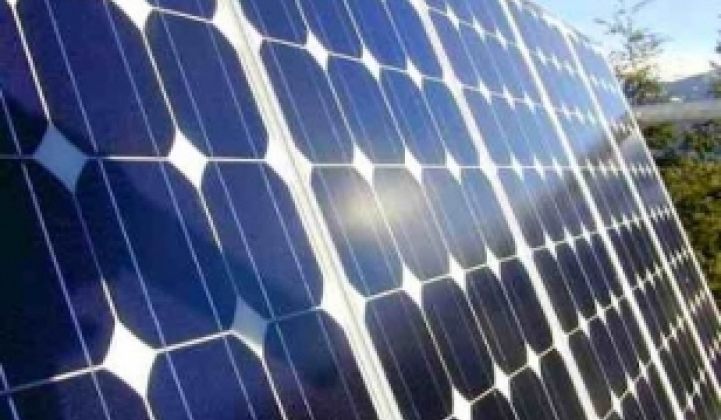The federal government is proposing to set aside 670,000 acres on public land and divide them into 24 energy zones to speed up solar energy development, said Interior Secretary Ken Salazar Monday.
The move represented the first time the government is looking at dedicating land for solar energy projects, said Salazar at a press conference in Las Vegas.
The energy zones are located on land overseen by the federal Bureau of Land Management in six western states: California, Nevada, Arizona, New Mexico, Colorado and Utah. The zones would be suitable for projects at 10 megawatts or larger, the interior department said. Maps of the zones, called Solar Energy Study Areas, will be published in the Federal Register on Tuesday (see the maps for Arizona, California, Colorado, New Mexico, Nevada and Utah). Together, the zones could accommodate solar farms with a total of nearly 100 gigawatts in generation capacity.
"Today marks the beginning of a historic effort in which the United States of America finally captures the power of the sun to power the energy needs of America in our homes and businesses and create jobs for people in America," Salazar said.
Solar energy companies would be glad to see a more efficient permitting process. Many of them have complained that the current process is too slow and could take nearly two years to get approval (see Pros and Cons of Putting Solar Thermal Projects on Private Land). The permitting process also typically involves state and other local agencies, and that also could lengthen the review.
The BLM, for its part, has been largely understaffed to handle the rush of solar energy projects in recent years (see The Rush for Gigawatts In the Desert Explodes).
The BLM plans to carry out the environmental impact analyses of the 24 zones to see if they would be suitable for large-scale solar projects, and complete them by the end of 2010. The public will get a chance to comment before the final designation is made.
This effort would contribute to a larger and ongoing initiative by the BLM to create what's known as the Solar Programmatic Environmental Impact Statement (PEIS). The BLM started working on the PEIS last year, and this broad environmental and economic impact analysis covers all of the six states mentioned above.
The PEIS would serve as the basis for evaluating each proposed solar energy project. The document would address key and more common environmental issues and save some of the time and money the BLM and each project developer would otherwise have to spend on analyzing every project. It should enable speedier negotiations over what a project developer must do to mitigate environmental impact.
The federal agency isn't stopping its project reviewing process while it carries out the environmental studies of the proposed energy zones and completes the PEIS. There already are 35 proposed solar projects within the 24 energy zones, Salazar said.
Overall, the BLM is handling 158 active solar energy applications that cover 1.8 million acres. The 158 projects would have a generation capacity of 97 gigawatts, which would be enough to power 29 million homes, the interior department said.
But the BLM hasn't issued the final permits for any of the solar projects. Projects proposed by BrightSource Energy in Oakland, Calif., and Stirling Energy Systems in Scottsdale, Ariz., are the farthest along securing permits. Salazar said 13 projects would be under construction by the end of 2010.
The BLM will continue to accept new applications for areas within and outside of the energy zones, but will base its review of the new applications on the PEIS.
The government selected the proposed 24 energy zones based on the areas' solar resources and proximity to roads and transmission lines, among other criteria. The department bypassed national parks and land used by the defense department, as well as "sensitive lands, wilderness and other high-conservation-value lands as well as lands with conflicting uses."
Creating these energy zones isn't likely to prevent opposition from environmental and community groups over the kind of solar energy projects that are under consideration.
Those projects typically cover hundreds of acres in the desert, and some require grading of the land and water for cooling and cleaning solar energy equipment. Water, of course, is a precious commodity in the desert.
There are 35 proposed solar projects within the 24 energy zones, Salazar said. Overall, the BLM is handling 158 active solar energy applications that cover 1.8 million acres. The 158 projects would have a generation capacity of 97 gigawatts, which would be enough to power 29 million homes, the interior department said.
The BLM plans to set up offices in Nevada, Arizona, California and Wyoming that would expedite the project evaluation process. The first office would be located in Las Vegas.
Join experts and influencers at Greentech Media's Growth Opportunities in the New PV Market: Projects, Finance and Policy in San Francisco on July 13.




